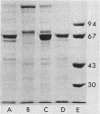Abstract
Acetivibrio cellulolyticus extracellular cellulase extensively hydrolyzed crystalline celluloses such as Avicel (FMC Corp., Food and Pharmaceutical Products Div., Philadelphia, Pa.) but only if it was desalted and supplemented with Ca2+. The Ca2+ effect was one of increased enzyme stability in the presence of the ion. Although preincubation of the cellulase complex at 40°C for 5 h without added Ca2+ had a negligible effect on endoglucanase activity or on the subseqent hydrolysis of amorphous cellulose, the capacity of the enzyme to hydrolyze crystalline cellulose was almost completely lost. Adsorption studies showed that 90% of the Avicel-solubilizing component of the total enzyme preparation bound to 2% Avicel at 40°C. Under these conditions, only 15% of the endoglucanase and 25% of the protein present in the enzyme preparation adsorbed to the substrate. The protein profile of the bound enzyme, as analyzed by sodium dodecyl sulfate-polyacrylamide gel electrophoresis, was complex and distinctly different from the profile observed for total cellulase preparations. The specific activity of A. cellulolyticus cellulase with respect to Avicel hydrolysis was compared with that of commercially available Trichoderma reesei cellulase.
Full text
PDF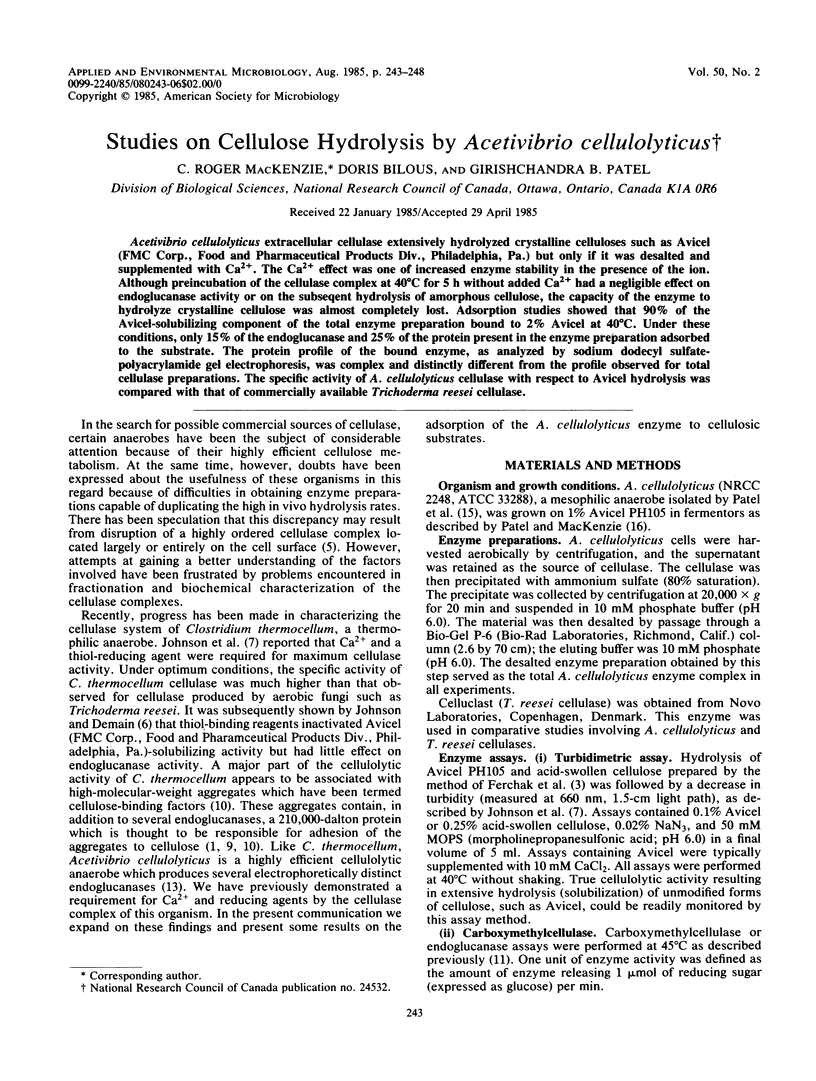
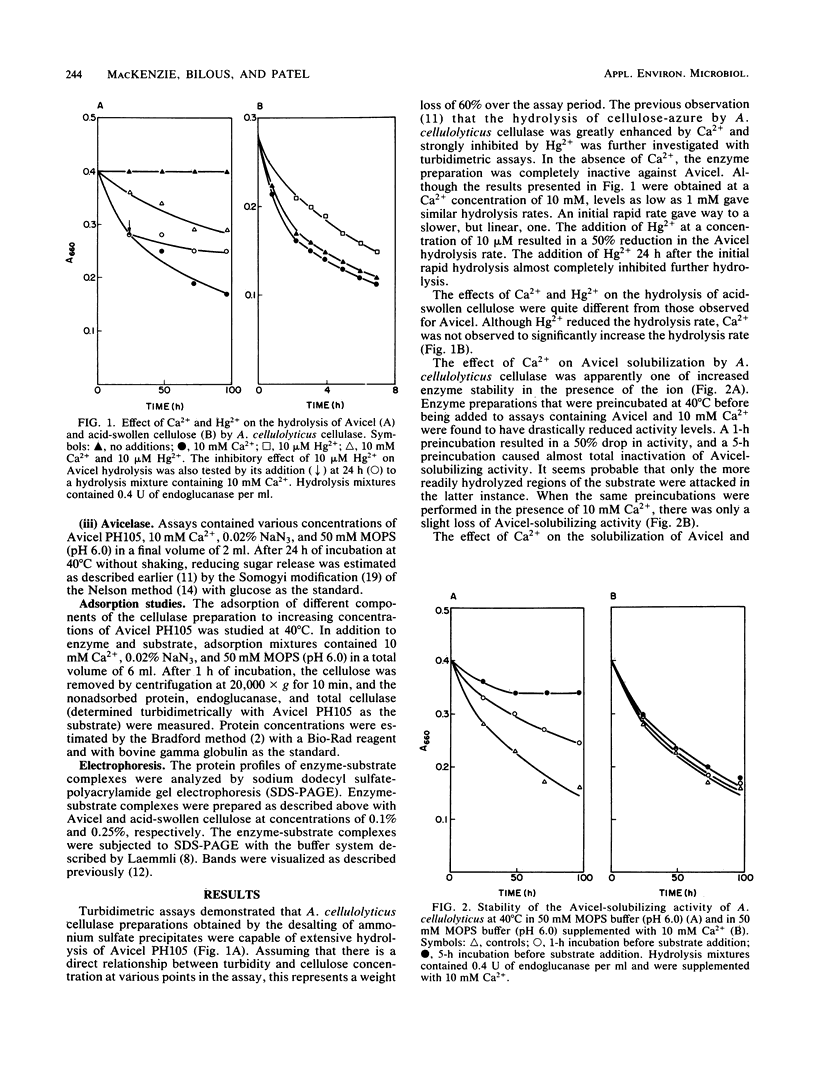
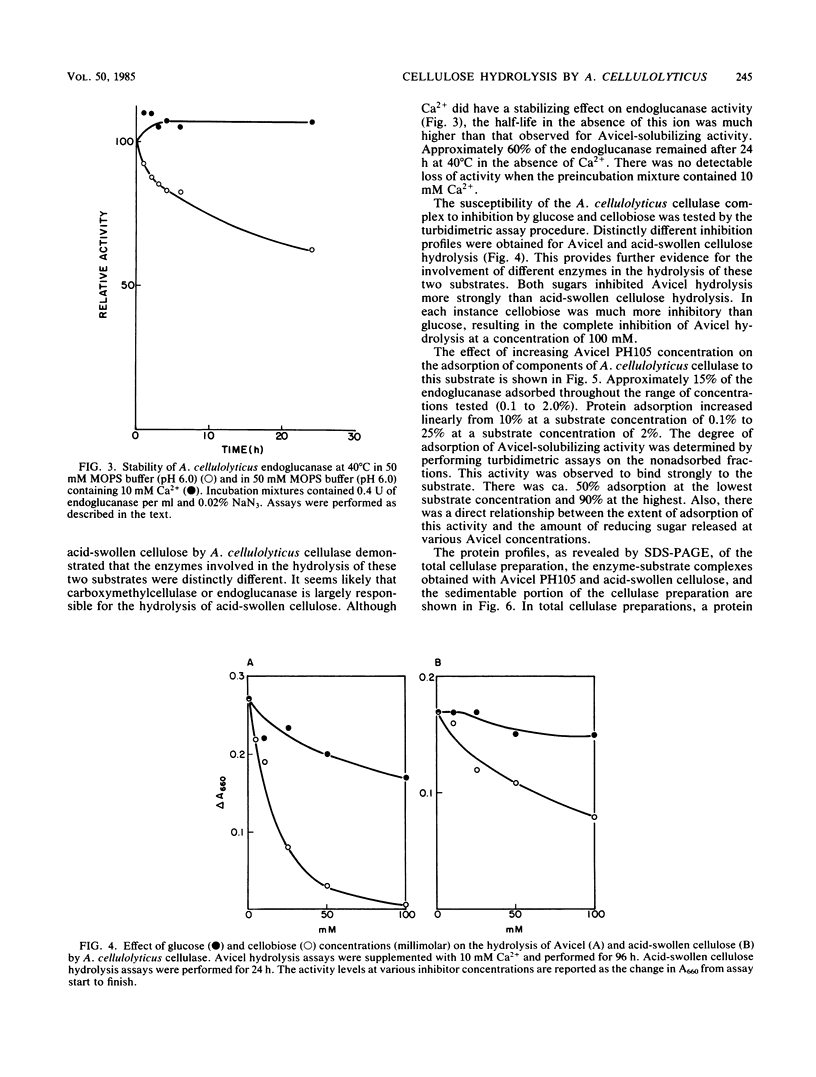

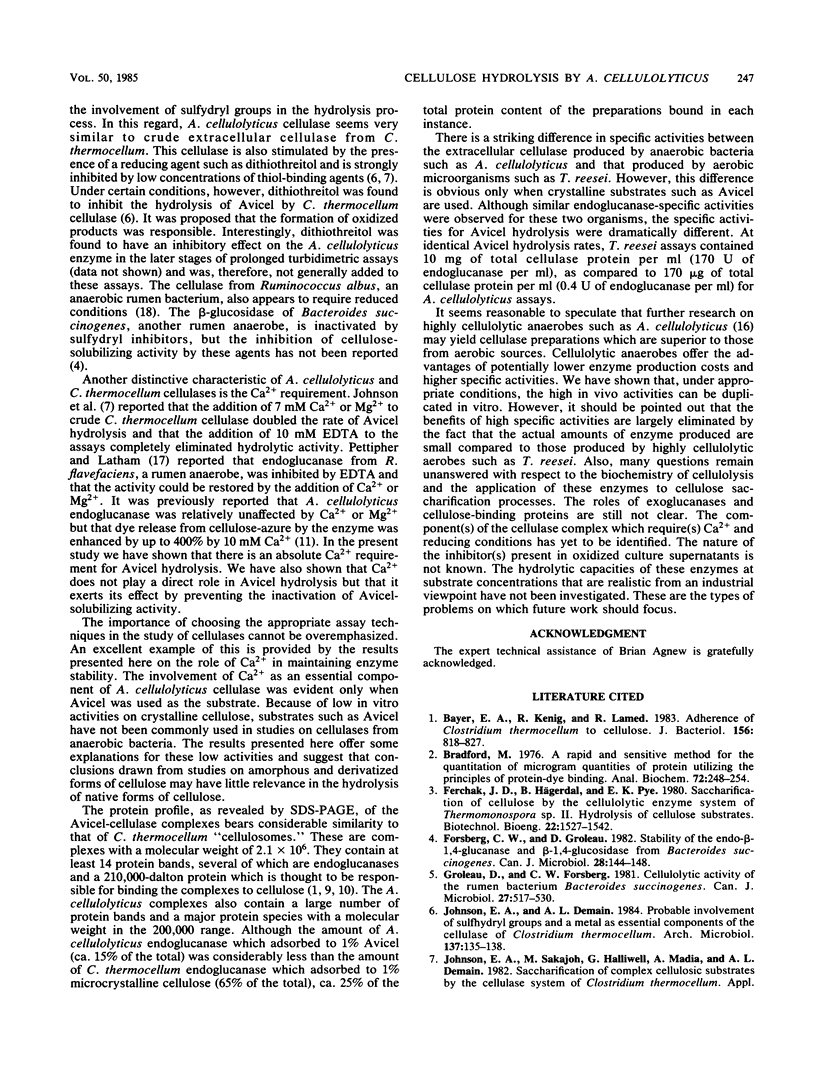
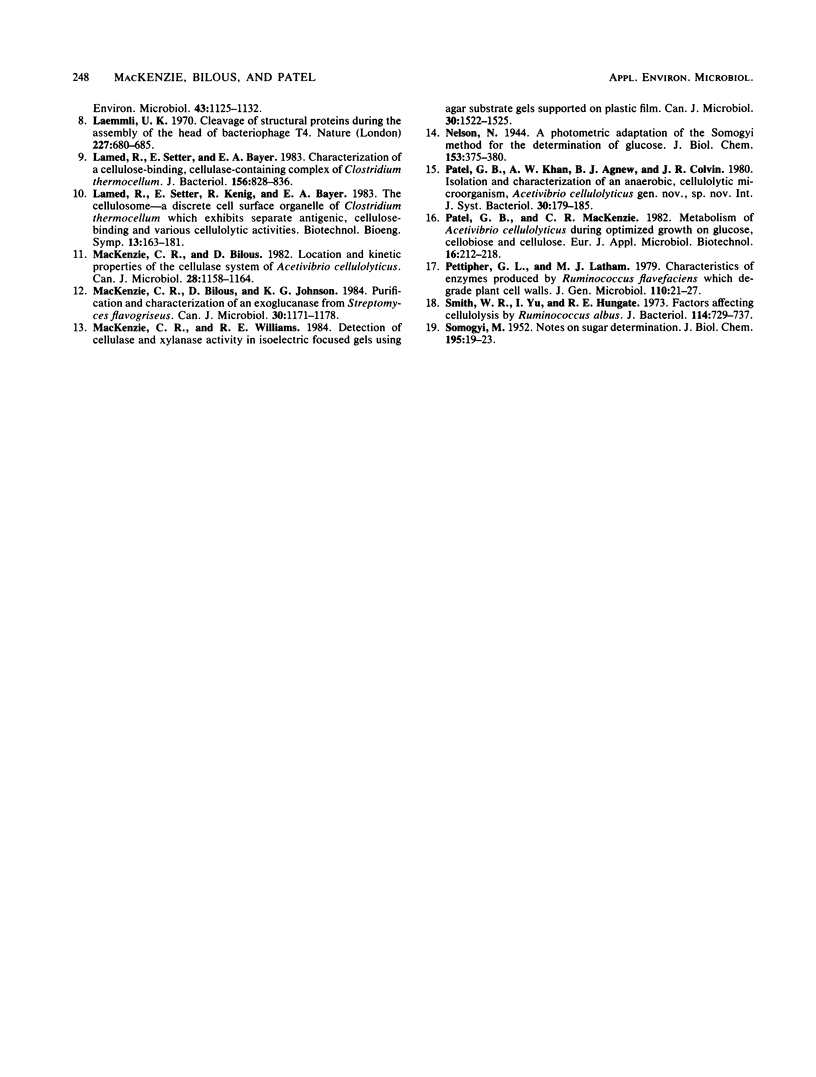
Images in this article
Selected References
These references are in PubMed. This may not be the complete list of references from this article.
- Bayer E. A., Kenig R., Lamed R. Adherence of Clostridium thermocellum to cellulose. J Bacteriol. 1983 Nov;156(2):818–827. doi: 10.1128/jb.156.2.818-827.1983. [DOI] [PMC free article] [PubMed] [Google Scholar]
- Bradford M. M. A rapid and sensitive method for the quantitation of microgram quantities of protein utilizing the principle of protein-dye binding. Anal Biochem. 1976 May 7;72:248–254. doi: 10.1016/0003-2697(76)90527-3. [DOI] [PubMed] [Google Scholar]
- Forsberg C. W., Groleau D. Stability of the endo-beta-1,4-glucanase and beta-1,4-glucosidase from Bacteroides succinogenes. Can J Microbiol. 1982 Jan;28(1):144–148. doi: 10.1139/m82-017. [DOI] [PubMed] [Google Scholar]
- Groleau D., Forsberg C. W. Cellulolytic activity of the rumen bacterium Bacteroides succinogenes. Can J Microbiol. 1981 May;27(5):517–530. doi: 10.1139/m81-077. [DOI] [PubMed] [Google Scholar]
- Laemmli U. K. Cleavage of structural proteins during the assembly of the head of bacteriophage T4. Nature. 1970 Aug 15;227(5259):680–685. doi: 10.1038/227680a0. [DOI] [PubMed] [Google Scholar]
- Lamed R., Setter E., Bayer E. A. Characterization of a cellulose-binding, cellulase-containing complex in Clostridium thermocellum. J Bacteriol. 1983 Nov;156(2):828–836. doi: 10.1128/jb.156.2.828-836.1983. [DOI] [PMC free article] [PubMed] [Google Scholar]
- MacKenzie C. R., Bilous D., Johnson K. G. Purification and characterization of an exoglucanase from Streptomyces flavogriseus. Can J Microbiol. 1984 Sep;30(9):1171–1178. doi: 10.1139/m84-183. [DOI] [PubMed] [Google Scholar]
- SMOGYI M. Notes on sugar determination. J Biol Chem. 1952 Mar;195(1):19–23. [PubMed] [Google Scholar]
- Smith W. R., Yu I., Hungate R. E. Factors affecting cellulolysis by Ruminococcus albus. J Bacteriol. 1973 May;114(2):729–737. doi: 10.1128/jb.114.2.729-737.1973. [DOI] [PMC free article] [PubMed] [Google Scholar]



